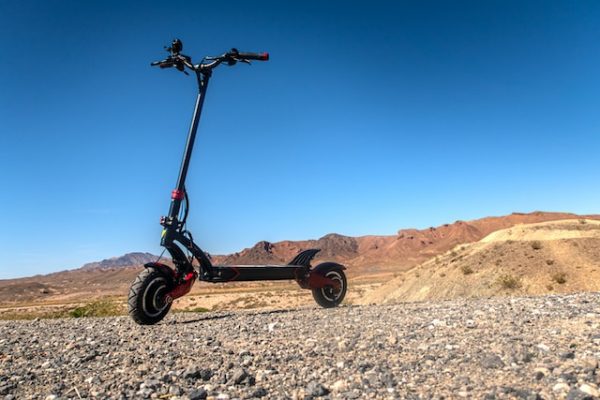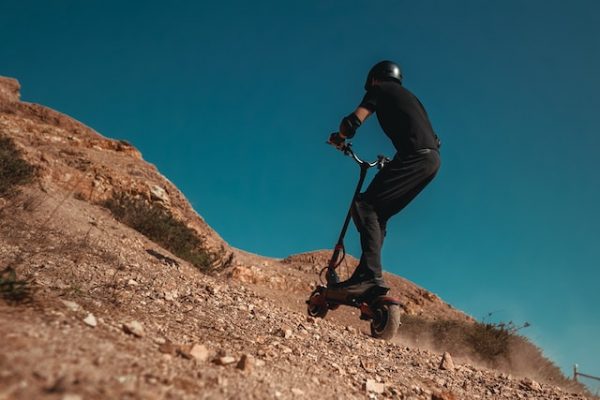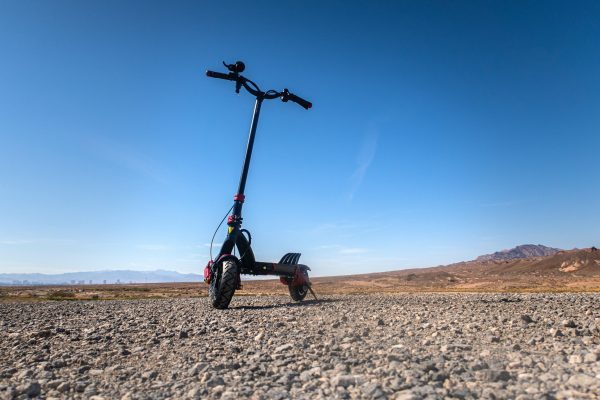We understand your concerns regarding safety while riding on gravel. That’s why FamilyHype – a website dedicated to supporting families – has put together these guidelines to help you navigate this terrain with confidence.

Our main focus is on understanding your vehicle’s capabilities, equipping yourself with the right protective gear, learning proper riding techniques for gravel, mastering braking skills in such conditions, maintaining regularly, and knowing how to respond to emergencies.
We don’t just want you to ride; we want you to ride safe and smart. Trust us when we say that with the right knowledge and preparation – such as learning the basics of scooter safety, the proper use of safety gear, and understanding the right riding techniques for gravel – riding on gravel can be an enjoyable experience rather than a daunting task.
So buckle up! You’re about to take one step closer towards becoming a more confident and responsible rider who always puts safety first.
Key Takeaways
No matter if you’re riding an electric scooter on gravel safety always comes first! To make sure you have a safe and enjoyable ride, it’s important to know your scooter’s capabilities, wear appropriate protective safety gear such as a helmet and knee pads, and master the correct riding techniques and braking methods. Regular maintenance, as well as being aware of how to respond in emergencies, are also key to a successful ride.
Safety should always be your main point of concern when riding a scooter or bike on gravel, but that doesn’t mean you can’t have a great time! By following the guidelines outlined in this article, you can enjoy a safe and enjoyable ride on gravel.
Understand Your Scooter’s Capabilities
Before hitting the gravel roads, it’s crucial to understand what your scooter can handle. At FamilyHype, we believe that with a little scooter customization, we can ensure our rides are tailor-fitted for terrain adaptability. Our two-wheeled companions come with various capabilities, including motor power, speed, range, and acceleration.
It’s important to respect the limitations of your ride, especially with larger wheels, so you can travel safely and confidently. Let’s equip ourselves with the right safety gear and discuss how to optimize your scooter for gravel scooting. From increasing wheel size and using bigger tires for increased traction to navigating ruts and installing a shock absorber for better handling, there are a variety of ways to customize your ride, especially if you need to address issues with low ground clearance.
Equip Yourself With The Right Safety Gear
As we venture into the world of scooter riding, it’s paramount for us to prioritize safety by equipping ourselves with the right gear. A good helmet is crucial for protecting our heads from serious injury, especially when riding on dirt, and cannot be overstated in its importance.
Likewise, protective clothing shields our bodies and feet not just from potential accidents but also from harsh weather conditions and debris on the road.
Importance Of A Good Helmet
When navigating the rocky terrain of a gravel path with a scooter, you’ll quickly come to understand the importance of a good helmet – it’s not just a safety accessory, but your ultimate lifeline.
At FamilyHype, we recognize that helmet durability and visibility are two essential factors when it comes to safeguarding your well-being during a risky ride. Wearing a helmet can protect your head from serious injury while allowing you to serve others without worrying about your own safety.

Additionally, protective clothing such as elbow pads, knee pads, and wrist guards can help further reduce the risk of injury while tackling those gravelly tracks.
So, if you’re an avid scooter enthusiast, be sure to equip yourself with the necessary safety gear and stand to ensure your ride is as safe as possible.
Protective Clothing
Don’t underestimate the impact of protective clothing – it’s not just about looking the part, but also shielding your body from potential harm during adventurous escapades. Padded outfits offer a buffer against injuries and scrapes, while visibility enhancement is essential for electric scooters; bright colors ensure other road users can spot you easily, especially when navigating loose stuff.
Safety doesn’t stop at dressing right though, it extends to mastering how we handle our scooters’ handlebars and motorcycles. To ensure your wellbeing, FamilyHype strongly recommends that you understand proper riding techniques.
Learn The Proper Riding Techniques
If you’re looking to master the art of riding on a gravel road with your scooter, FamilyHype has got your back! We’ll guide you through the vital riding techniques to ensure your safety and provide an exhilarating ride. This article will focus on how to brake effectively and confidently on a gravel road. It’s important to note that this content doesn’t apply to gas-powered scooters or dirt bikes.
We encourage you to share your feedback, experience, and opinions on scooter riding techniques with us here at FamilyHype, especially if you rode on gravel roads. We’re passionate about providing our readers with the knowledge and resources to make the most out of their scooter journey.
Master The Art Of Braking On Gravel
It’s crucial to understand that braking effectively on gravel pavement, a type of uneven surface, requires a unique set of skills and techniques. At FamilyHype, we’re dedicated to providing parents and anyone who highly values the family unit with the information they need to ensure their scooter is always in top condition.

So, let’s consider these techniques that can make all the difference when it comes to successfully navigating gravel surfaces:
- Master loose gravel and grass traction: Adjust your speed in accordance with the loose gravel surface.
- Learn balancing tactics: Keep your weight low and centered to maintain stability and prevent losing balance.
- Braking at a steady pace is key: Sudden stops may cause skidding, so it’s important to slow down gradually on loose gravel.
Having a good death grip on these tips ensures that riders can better control their vehicles on a gravel roadway and instill a sense of confidence. To ensure regular maintenance and checks for your scooter, regularly inspect the brakes, tires, and other parts for any wear and tear.
Regular Maintenance And Checks
Keeping your scooter in top condition isn’t just about making sure it looks good – regular maintenance and checks are essential! We understand that proper tire pressure is key to getting the best performance on gravel, so make sure to keep it at the optimal level.
Additionally, a thorough cleaning of your scooter can prevent any harmful debris from causing damage. With these precautionary measures, you’ll be better prepared to tackle any riding challenge. Now let’s dive into how to best deal with emergency situations.

As an additional note, the tips mentioned here aren’t applicable to gas-powered scooters.
Responding To Emergencies
When it comes to gas powered scooters, responding to emergencies is a key factor for safety. Emergency preparedness can make all the difference, and here at FamilyHype, we understand the importance of being ready in case of an emergency.
Make sure to:
- Have a first aid kit on board.
- Make sure your phone’s charged for emergency calls.
- Stay calm and assess the situation quickly.
- Consider taking a first aid course.
Remember, safety isn’t just about prevention; it’s also about being prepared for effective response. With the right knowledge of emergency response and the right tools, you can ensure you’re ready for anything that comes your way.
Riding On Gravel: Conclusion
So, we’ve covered the basics of safe riding on gravel. It’s crucial that we know our vehicle’s capabilities, wear appropriate safety gear, and master correct riding techniques and braking methods. Regular maintenance is key, as well as knowing how to respond in emergencies.
Let’s remember these guidelines to ensure a safe and enjoyable ride on gravel. We’re in this together – your safety matters to us! As a FamilyHype reader, please share your feedback and experience.
We want to remind you that scooters are fun, but safety comes first! By following the guidelines outlined in this article, you can enjoy a safe and enjoyable ride on gravel.
Frequently Asked Questions (FAQs):
Can Scooters Go In Gravel?
Yes, scooters can go on gravel, but it requires proper technique and control.
How To Ride A Scooter Safely?
To ride a scooter safely, wear appropriate safety gear, follow traffic rules, be aware of your surroundings, and practice riding, good balance, and control.
Are Scooters Easy To Ride?
Yes, scooters are generally easy to ride, especially electric scooters that have simple controls and require minimal physical effort.
Is Scooter Better Than Walking?
A scooter can be a faster and more convenient mode of transportation compared to walking, especially for short to medium distances.
What Is The Most Safety Scooter?
The safety of a scooter depends on various factors such as build quality, stability, braking system, and safety features. It’s important to choose a reputable brand and model that meets safety standards.
What Is A Safe Speed On A Scooter?
Maintaining a low speed, a safe speed on a scooter depends on various factors such as the road conditions, traffic, and the rider’s skill level. Generally, it is recommended to ride at a speed that allows for proper control and reaction to any potential hazards.
Which Scooter Has The Best Ground Clearance?
There are various scooters available with good ground clearance, but specific models and brands may vary. It’s advisable to research and compare different scooters to find one with suitable ground clearance for your needs.
Are Scooters Easier Than Bikes?
Scooters and bikes have different riding dynamics, and what is considered easier can vary from person to person. However, for many people, scooters are easier to learn and ride compared to bikes, especially for shorter distances.
Are Scooters Safer Than Bicycles?
Safety can vary depending on various factors, including riding conditions, rider behavior, and adherence to traffic rules. Generally, both scooters and bicycles can be safe modes of transportation if ridden responsibly and with proper safety precautions.
What Is The Difference Between A Scooter And A Moped?
Understanding the main difference between a scooter and a moped lies in their engine size and power, which are important factors to consider when choosing the right vehicle for your needs. Scooters typically have smaller engines and are designed for easier maneuverability, while mopeds have slightly larger engines and often require pedal assistance to start.
DISCLAIMER (IMPORTANT): This information (including all text, images, audio, or other formats on FamilyHype.com) is not intended to be a substitute for informed professional advice, diagnosis, endorsement or treatment. You should not take any action or avoid taking action without consulting a qualified professional. Always seek the advice of your physician or other qualified health provider with any questions about medical conditions. Do not disregard professional medical advice or delay seeking advice or treatment because of something you have read here a FamilyHype.com.
